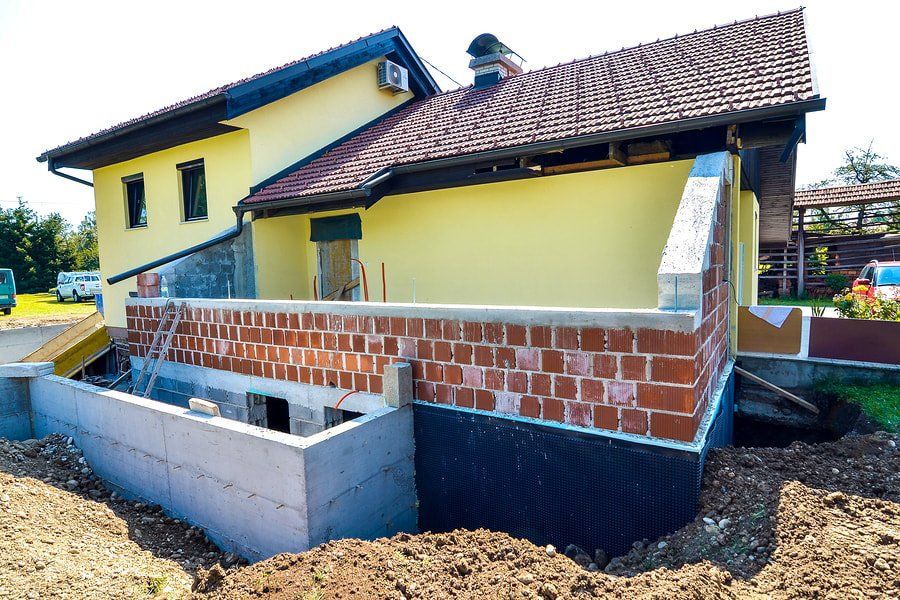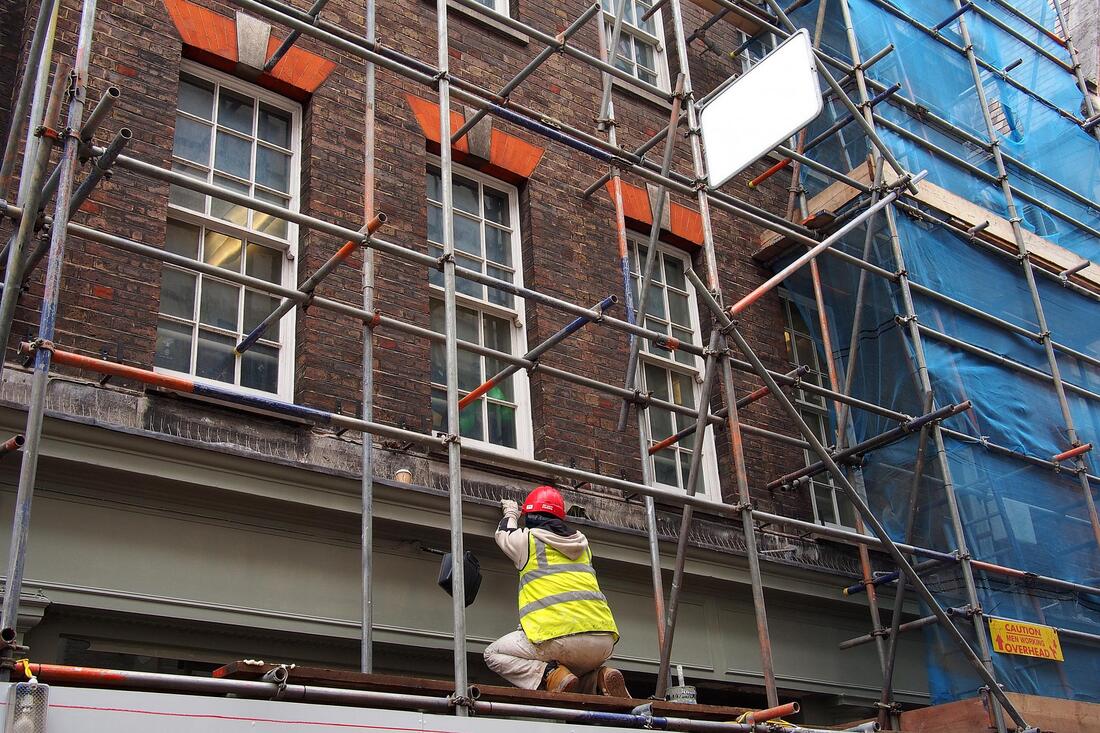Why Choose Pier & Beam Foundations? Benefits and Considerations
Understanding Pier & Beam Foundations: Benefits, Repairs, and Considerations for Homeowners
When it comes to choosing the right type of foundation for your home, the decision can be challenging. Among the various options available, pier and beam foundations have gained popularity for their unique advantages and practical applications. This guide will explore the benefits and considerations of opting for a pier and beam foundation, helping you make an informed choice for your home.

What is a Pier & Beam Foundation?
A pier and beam foundation is a type of house foundation that consists of concrete piers or pilings that are driven deep into the ground. These piers support a framework of horizontal beams that provide stability and elevation for the structure above. This type of foundation is often used in areas with expansive soil, high water tables, or where the ground is prone to shifting.
Unlike a slab foundation, a pier beam foundation creates a crawl space beneath the house, which allows for easy access to plumbing, electrical wiring, and HVAC systems. This crawl space can also provide additional ventilation and protection against moisture.
Benefits of Pier & Beam Foundations
Easy Access for Repairs: One of the most significant benefits of a pier and beam foundation is the accessibility it provides. The crawl space beneath the home allows for straightforward access to utilities, making foundation repair and maintenance easier and less costly. Whether it's a foundation inspection or fixing foundation cracks, professionals can quickly and efficiently address issues without the need for invasive procedures.
Improved Foundation Drainage: A pier and beam foundation offers superior drainage capabilities compared to a slab foundation. The elevation provided by the foundation piers ensures that water does not accumulate around the house foundation, which reduces the risk of foundation cracks and water damage. Proper foundation drainage is crucial for preventing long-term structural issues and maintaining the integrity of the house and foundation.
Better Insulation and Ventilation: The crawl space created by a pier beam foundation acts as a buffer zone between the ground and the house, providing better insulation against temperature changes. Additionally, it allows for improved ventilation, which can help reduce moisture levels and prevent mold growth. This can be particularly beneficial in areas with high humidity or heavy rainfall, as it promotes a healthier indoor environment.
Adaptability to Various Soils and Terrain: Pier and beam foundations are well-suited for areas with challenging soil conditions, such as expansive clay or sandy soils. The use of foundation piers allows for the distribution of the house's weight across multiple points, reducing the risk of foundation settlement or shifting. This adaptability makes pier and beam foundations an excellent choice for regions with uneven terrain or where traditional slab foundations might not be feasible.
Flexibility in Design: Homes with pier and beam foundations can be designed with more flexibility. The elevation provided by the foundation allows for easier integration of different architectural features, such as porches or raised decks. This flexibility in design can enhance the aesthetic appeal of the home and increase its market value.
Considerations for Pier & Beam Foundations
While pier and beam foundations offer numerous advantages, there are some considerations to keep in mind:
Potential for Foundation Movement:
Although pier and beam foundations are designed to accommodate soil movement, they are not immune to foundation problems. Changes in soil moisture levels or poor construction can lead to foundation movement, which can cause cracks in walls and other structural issues. Regular foundation inspection and maintenance are crucial for preventing such problems and ensuring the longevity of the foundation.
Higher Initial Cost:
The construction of a pier and beam foundation can be more expensive than a slab foundation due to the additional materials and labor required. The process involves installing foundation piers and beams, creating a crawl space, and ensuring proper foundation drainage. However, this initial investment can be offset by the long-term benefits and reduced maintenance costs associated with this type of foundation.
Vulnerability to Pests: The crawl space beneath a pier and beam foundation can attract pests such as rodents, insects, and termites. If not properly sealed and maintained, these pests can cause damage to the support beams and other structural components. Implementing effective pest control measures and conducting regular inspections can help mitigate this risk.
Moisture Control: While a pier and beam foundation provides better drainage, it is still essential to manage moisture levels within the crawl space. Excess moisture can lead to mold growth, wood rot, and other issues that can compromise the integrity of the house foundation. Installing a vapor barrier, ensuring proper ventilation, and maintaining foundation drainage can help prevent moisture-related problems.
Maintenance Requirements:
Unlike slab foundations, pier and beam foundations require more ongoing maintenance. This includes regular inspections of the foundation piers, support beams, and crawl space to ensure that there are no signs of damage or deterioration. Homeowners should also be vigilant about checking for foundation cracks and addressing any issues promptly to avoid more extensive house foundation repair in the future.
Common Issues and Repairs for Pier & Beam Foundations
Even with proper maintenance, pier and beam foundations can experience problems that require foundation repair. Here are some common issues and their solutions:
Foundation Settling or Shifting: Over time, soil movement can cause the foundation piers to settle or shift, leading to uneven floors, cracks in walls, and other structural issues. In such cases, foundation repair may involve leveling the house and reinforcing or replacing the affected piers. This process, known as underpinning, can stabilize the foundation and prevent further movement.
Deteriorating Support Beams: The support beams in a pier and beam foundation can deteriorate due to moisture, pests, or age. If left unchecked, this can compromise the stability of the house and foundation. Replacing damaged beams and installing additional supports can restore the structural integrity of the foundation.
Foundation Cracks: Cracks in the foundation can occur due to soil movement, moisture, or poor construction. Small foundation cracks can often be repaired with epoxy injections or sealants, while larger cracks may require more extensive foundation cracks repair, such as installing new foundation piers or reinforcing the existing structure.
Water Damage and Poor Drainage:
Inadequate foundation drainage can lead to water pooling around the house foundation, increasing the risk of water damage and foundation problems. Installing a proper drainage system, such as French drains or gutters, can help direct water away from the foundation and prevent damage.
Crawl Space Moisture and Mold: Moisture accumulation in the crawl space can lead to mold growth and wood rot, which can weaken the support beams and other components of the foundation. Installing a vapor barrier, ensuring proper ventilation, and using dehumidifiers can help control moisture levels and prevent mold-related issues.
When to Consider a Foundation Inspection
Regular foundation inspections are essential for identifying potential problems before they escalate into costly repairs. Here are some signs that indicate it may be time for a foundation inspection:
Visible Foundation Cracks: Cracks in the foundation, whether horizontal or vertical, can be a sign of underlying issues that need to be addressed.
Uneven Floors: If you notice that your floors are sloping or uneven, it could be a sign of foundation settlement or shifting.
Doors and Windows Sticking: Difficulty in opening or closing doors and windows can indicate foundation movement or shifting.
Cracks in Walls: Cracks in walls, particularly around door frames and windows, can be a sign of foundation problems.
Water Pooling Around the Foundation: If you notice water pooling around the base of your house after a rainstorm, it could indicate poor foundation drainage and the potential for water damage.
Finding Foundation Repair Services
If you suspect foundation issues or need a professional assessment, it's important to find reliable foundation repair services. Searching for "foundation repair near me" can provide a list of local companies specializing in house foundation repair. When choosing a contractor, consider their experience, reputation, and reviews to ensure that you receive quality service and long-lasting results.
Conclusion
Pier and beam foundations offer numerous benefits for homeowners, including easy access for repairs, improved drainage, better insulation, and adaptability to various soils and terrains. However, they also come with certain considerations, such as higher initial costs, potential for pest infestations, and the need for regular maintenance. By understanding the benefits and potential drawbacks of pier and beam foundations, homeowners can make an informed decision that best suits their needs and ensures the longevity and stability of their homes.
Whether you're considering a new foundation or need house foundation repair, it's essential to stay informed and proactive about maintaining the integrity of your home's foundation. Regular inspections, prompt repairs, and proper maintenance can help protect your investment and provide peace of mind for years to come.



